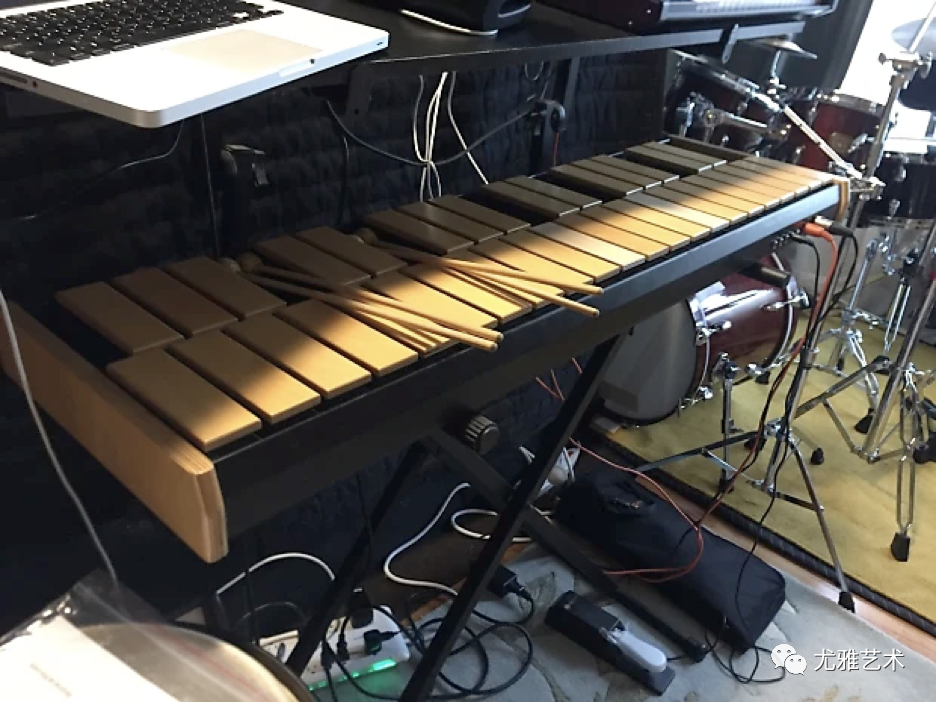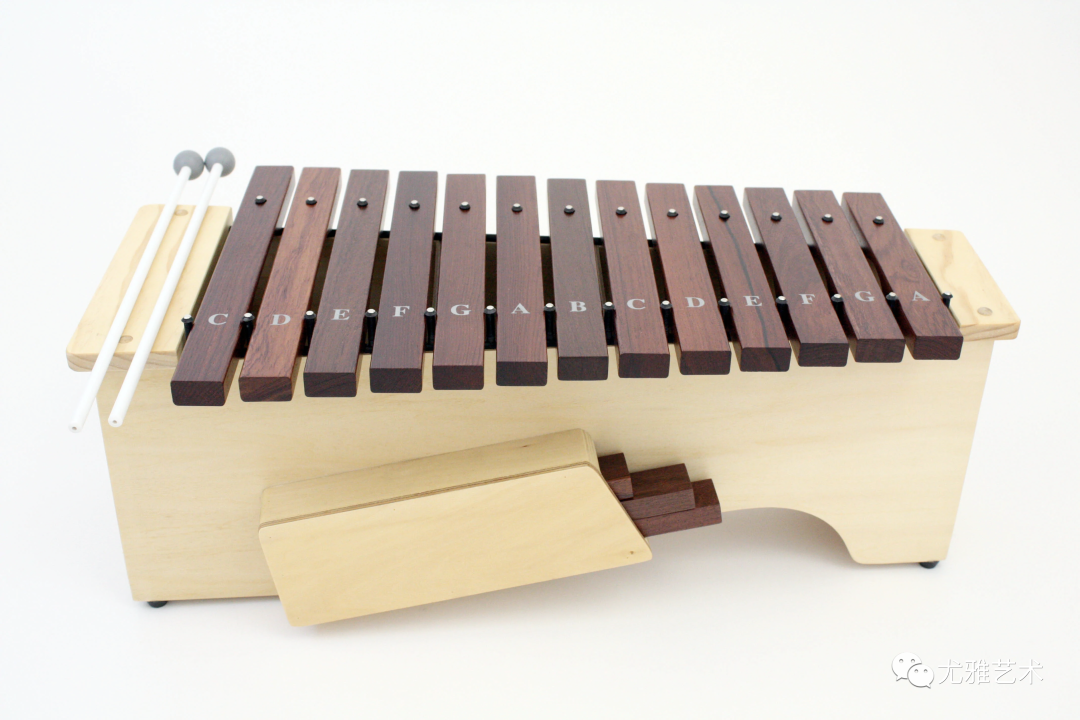
木琴是打击乐器家族中的一种乐器,由用木槌敲击的木条组成。 与钟琴(使用金属棒)一样,木琴本质上由一组按照钢琴键盘的方式排列的调音木键组成。 每个小节都是一个调谐到音阶音高的个人音阶,在许多非洲和亚洲乐器中是五声音阶或七声音阶,在许多西方儿童乐器中是全音阶,或者在管弦乐中使用半音阶。The xylophone is a musical instrument in the percussion family that consists of wooden bars struck by mallets. Like the glockenspiel (which uses metal bars), the xylophone essentially consists of a set of tuned wooden keys arranged in the fashion of the keyboard of a piano. Each bar is an idiophone tuned to a pitch of a musical scale, whether pentatonic or heptatonic in the case of many African and Asian instruments, diatonic in many western children's instruments, or chromatic for orchestral use.
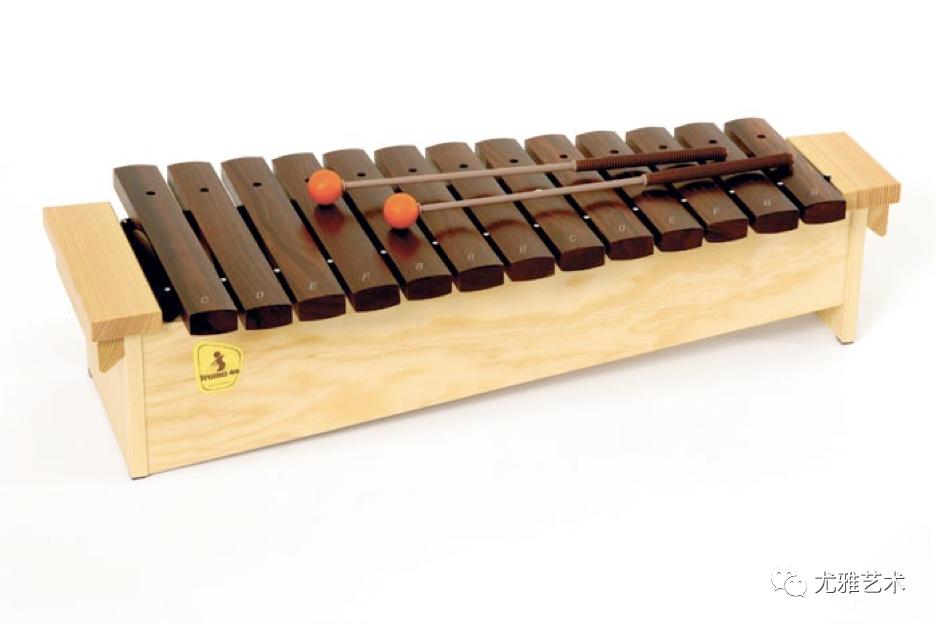
木琴一词通常可以用来包括所有此类乐器,例如马林巴琴、巴拉丰琴甚至西门琴。 但在管弦乐队中,木琴一词特指音域比马林巴琴稍高、音色较干的半音阶乐器,不应混淆这两种乐器。 演奏木琴的人被称为木琴演奏者或简称为木琴演奏者。The term xylophone may be used generally, to include all such instruments such as the marimba, balafon and even the semantron. However, in the orchestra, the term xylophone refers specifically to a chromatic instrument of somewhat higher pitch range and drier timbre than the marimba, and these two instruments should not be confused. A person who plays the xylophone is known as a xylophonist or simply a xylophone player.
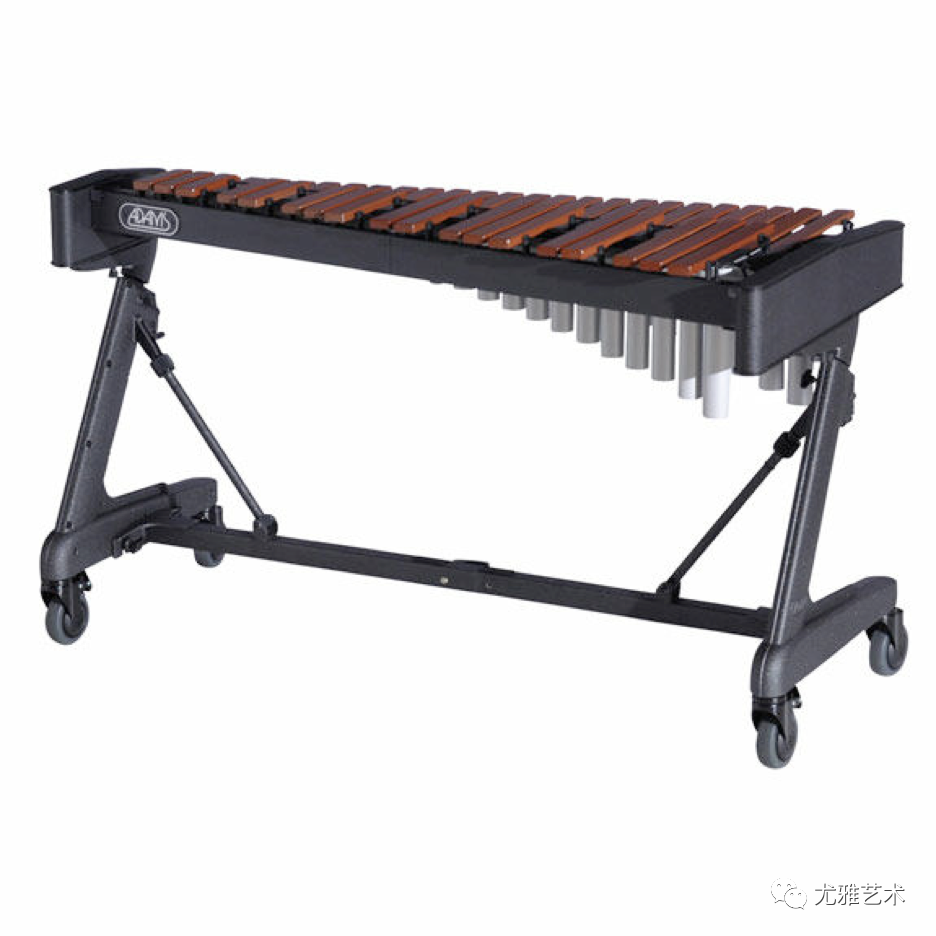
该术语还广泛用于指代石琴和金属琴类型的类似乐器。 例如,Pixiphone 和许多被制造商描述为木琴的类似玩具具有金属条而不是木条,因此在器官学上被视为钟琴而不是木琴。The term is also popularly used to refer to similar instruments of the lithophone and metallophone types. For example, the Pixiphone and many similar toys described by the makers as xylophones have bars of metal rather than of wood, and so are in organology regarded as glockenspiels rather than as xylophones.
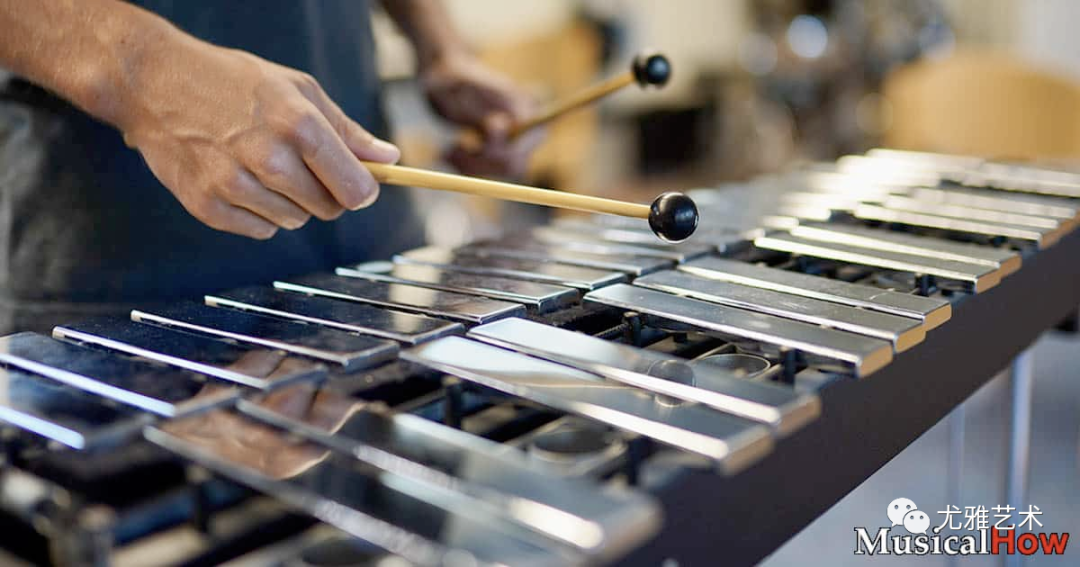
现代西方木琴有紫檀木、紫檀木、黄檀木或各种合成材料(例如玻璃纤维或玻璃纤维增强塑料)制成的木条,可以发出更响亮的声音。 有些可以小到 2+1⁄2 八度,但音乐会木琴通常是 3+1⁄2 或 4 个八度。 与钟琴一样,木琴也是一种移调乐器:它的声部写在发声音符下方一个八度。The modern western xylophone has bars of rosewood, padauk, cocobolo, or various synthetic materials such as fiberglass or fiberglass-reinforced plastic which allows a louder sound. Some can be as small a range as 2+1⁄2 octaves but concert xylophones are typically 3+1⁄2 or 4 octaves. Like the glockenspiel, the xylophone is a transposing instrument: its parts are written one octave below the sounding notes.

音乐会木琴在横杆下方有管式共鸣器,以增强音调和延音。 框架由木头或便宜的钢管制成:更昂贵的木琴具有高度调节和支架更稳定的功能。 在其他音乐文化中,一些版本有充当亥姆霍兹共鸣器的葫芦。 其他的是“槽式”木琴,带有一个空心体,作为所有小节的共鸣器。 旧的方法包括将钢筋排列在捆绑的稻草捆上,并且今天仍在实践,将钢筋彼此相邻放置成梯子状布局。 古代的木槌是用柳木制成的,敲打的末端有勺子状的碗。Concert xylophones have tube resonators below the bars to enhance the tone and sustain. Frames are made of wood or cheap steel tubing: more expensive xylophones feature height adjustment and more stability in the stand. In other music cultures some versions have gourds that act as Helmholtz resonators. Others are "trough" xylophones with a single hollow body that acts as a resonator for all the bars. Old methods consisted of arranging the bars on tied bundles of straw, and, is still practiced today, placing the bars adjacent to each other in a ladder-like layout. Ancient mallets were made of willow wood with spoon-like bowls on the beaten ends.

该乐器具有不为人知的古代起源。 Nettl 提出它起源于东南亚并来到非洲 c. 公元 500 年,一群讲马来-波利尼西亚语的民族迁移到非洲,并将东非木琴管弦乐队与爪哇和巴厘岛加麦兰管弦乐队进行了比较。: 18–19, 100 最近,民族音乐学家和语言学家罗杰·布兰奇 (Roger Blench) 提出了独立起源的挑战 在非洲的木琴中,在当地发明的证据中,引用了非洲木琴的独特特征以及非洲木琴类型和原型木琴类乐器的更多种类。The instrument has obscure ancient origins. Nettl proposed that it originated in southeast Asia and came to Africa c. AD 500 when a group of Malayo-Polynesian speaking peoples migrated to Africa, and compared East African xylophone orchestras and Javanese and Balinese gamelan orchestras.: 18–19, 100 This was more recently challenged by ethnomusicologist and linguist Roger Blench who posits an independent origin in of the Xylophone in Africa, citing, among the evidence for local invention, distinct features of African xylophones and the greater variety of xylophone types and proto-xylophone-like instruments in Africa.
